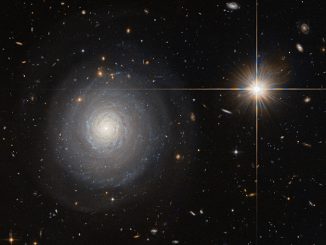When amateur astronomers turn their telescopes toward Hercules, the usual target is Messier 13, one of the brightest, easiest-to-find globular clusters in the northern sky. But a stone’s throw away is another bright companion – M92 – that runs a close second, containing some 330,000 stars orbiting the Milky Way’s core at a distance of 33,000 light years. Visible to the unaided eye under dark sky conditions, M92 was discovered by Johann Elert Bode in 1777. Four years later, Charles Messier spotted it and added the cluster to his famous catalogue. Neither man could have imagined the splendour revealed by the Hubble Space Telescope as seen in this stunning view.




